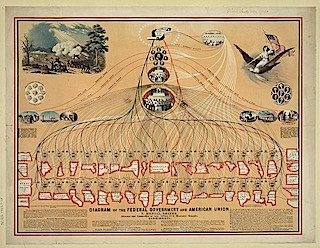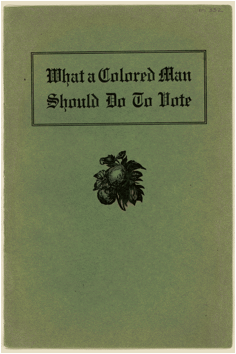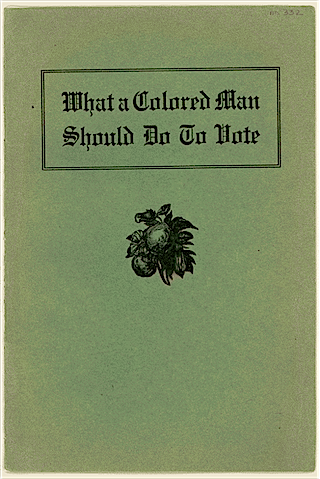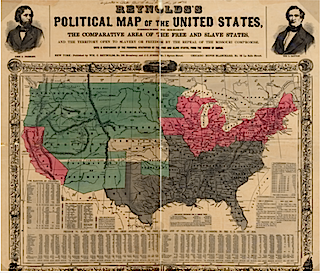Chris Stroup
Teaching American History on the Great
Plains
Summer 2010 - Lesson Plan 2
Class: CIHS America History 1301
Reconstruction
Objective:
For
students to expand their understanding of the politics, struggles, and
shortfalls of putting the United States back together after the American Civil
War. Students will examine various
aspects of the time period to determined what were the greatest struggles and
accomplishments of the time period.
Procedure:
Over the
course of two days students will be exposed to a series of materials that will
provide information on Reconstruction of the United States following the
American Civil War. There are multiple
resources available to the students, and they must utilize four, and from these
be able and prepared to defend their assigned position on Reconstruction. Oral
arguments will follow in class.
Resources:
A.
America: A
Narrative History. 6th Edition.
Tindahl and Shi, 2004. Pg 714-735
- Text excerpt explaining the period of Reconstruction
B. Smartboard projection of three main
Reconstruction plans (summaries) (attached)
C. “President Andrew Johnson Denounces
Changes in His Program of Reconstruction,
1867”
(From Major Problems in American History: Vol. 1 to 1877 - by Elizabeth Cobbs-Hoffman,
Jon Gjerde)
- President
Johnson presents his argument against franchisement of blacks and his opposing
radical reconstruction, which might lead to blacks in the South governing
whites – and his fear of this.
D. “Congressman Thaddeus Stevens
Demands a Radical Reconstuction” (From Major
Problems
in American History: Vol. 1 to 1877 - by Elizabeth Cobbs-Hoffman, Jon Gjerde)
- Stevens’
argument for radical reconstruction, and his politically motivated reasons
behind it.
E. “United States Atrocities”
(excerpt) (From Major Problems in American History: Vol.
1 to 1877 - by Elizabeth Cobbs-Hoffman,
Jon Gjerde)
Ida
B. Wells
- Wells
brings forth the problems faced by the African American community after
slavery, including that very little was accomplished during Reconstruction.
F. “DuBois’ Niagara Address,
1906” (excerpt) (From Major Problems in American
History: Vol. 1 to 1877 - by Elizabeth Cobbs-Hoffman, Jon
Gjerde)
- Dubois
presents a list of problems facing the African American community, and how in
actuality Reconstruction did little for blacks.
G. The Unfinished Nation-Tattered Remains(Downloaded from Learn360)
A clip
from the full video: The Unfinished
Nation
This
clip shows the cultural dynamics taking place between White southerners and
former slaves right after the Civil War, as well as providing information on
the corruption in the state governments.
Grade: 9-12| ©2004, Intelecom.
H.
Reconstruction: Northern Disagreement [08:31] (Downloaded from
Learn360)
A clip from the full video: Reconstruction: The Struggles Of Ordinary People
Following
election dispute, this clip examines the Northerners not only not embracing the
idea of African-American equality, but finally backing off and left African
Americans to sink or swim on their own in the South.
Grade: 9-12| ©2004, PBS.
I.
Freedom: A History of US: Episode 7: What Is Freedom? (Downloaded
from
Learn360)
A clip
from the full video: Freedom: A History
of US: Episodes 5 - 8
An
overview of the post Civil War period, providing information on early attempts
to heal, challenges of/for freed slaves, and a look at Plessy v Ferguson.
Grade: 6-8, 9-12| ©2002, PBS.
J.
Just the Facts: America's Documents of Freedom 1868-1890 [29:20]
(Downloaded from Learn360)
This
short video presents and interprets the documents following the American Civil
War and how they helped/hindered in the healing.
Grade: 6-8, 9-12| ©2003, Cerebellum.
K.
Reconstruction: The Beginning [19:36] (Downloaded from Learn360)
A clip
from the full video: Reconstruction: The
Second Civil War: Retreat
Abraham
Lincoln's first speech following the Civil War described how the fight of
Reconstruction was only beginning. Learn how African Americans struggled to
claim their freedom and claim their civil rights in a nation that was wrestling
with the idea of their equality.
Grade: 9-12| ©2004, PBS.
L.
Searching for a New Home in the American West [04:20] (Downloaded
from
Learn360)
A clip from the full video: The Unfinished Nation-The Meeting Ground
A brief look at the desire of newly freedmen to move west, and the struggles they encounter through the
many white immigrants also taking advantage of the Homestead Act.
Grade: 9-12| ©2004, Intelecom.
M. Diagram of the Federal Government and
American Union by N. Mendal Shafer,
attorney and counseller at law, office no. 5 Masonic
Temple, Cincinnati
-
Illustrates the intertwined nature of the American republic
N. What a Colored Man Should do to Vote
(Pamphlet)
O. Reynolds's political map of the United States
-
Demonstrates the area of the free and slave states
Procedures/Culminating Activities:
H-1:
Students will have read text account of Reconstruction.
Day 1: Students will be provided projection of the summaries of the major Reconstruction plans, and will be provided a position within the scope of Reconstruction. Video clip providing general information on Reconstruction will be viewed and discussed as a class. Readings will be posted online for students to read on their own prior to day 2.
Day 2:
Class will meet in the computer lab to continue research on their position
regarding Reconstruction. Of the
resources provided (video clips, readings, documents, visuals, etc.) students
will investigate and gather information to strengthen their position regarding
Reconstruction. They may also
research for their own two (2) resources to aid in their arguments.
Day 3: In
class, students will propose, argue, and defend their Reconstruction
positions. This will continue for
a maximum of 3 class periods depending on student engagement.
Resource B. (Each group will only
need to read one section, they can read the others)
Lincoln’s Ten-Percent Plan:
1863–1865
After
major Union victories at the battles of Gettysburg and Vicksburg in 1863,
President Abraham Lincoln began preparing his plan for Reconstruction to
reunify the North and South after the war’s end. Because Lincoln believed that
the South had never legally seceded from the Union, his plan for Reconstruction
was based on forgiveness. He thus issued the Proclamation of Amnesty and
Reconstruction in 1863 to announce his intention to reunite the once-united
states. Lincoln hoped that the proclamation would rally northern support for
the war and persuade weary Confederate soldiers to surrender.
The
Ten-Percent Plan
Lincoln’s
blueprint for Reconstruction included the Ten-Percent Plan, which specified
that a southern state could be readmitted into the Union once 10 percent of its
voters (from the voter rolls for the election of 1860) swore an oath of
allegiance to the Union. Voters could then elect delegates to draft revised
state constitutions and establish new state governments. All southerners except
for high-ranking Confederate army officers and government officials would be
granted a full pardon. Lincoln guaranteed southerners that he would protect
their private property, though not their slaves. Most moderate Republicans in
Congress supported the president’s proposal for Reconstruction because they
wanted to bring a quick end to the war.
In
many ways, the Ten-Percent Plan was more of a political maneuver than a plan
for Reconstruction. Lincoln wanted to end the war quickly. He feared that a
protracted war would lose public support and that the North and South would
never be reunited if the fighting did not stop quickly. His fears were
justified: by late 1863, a large number of Democrats were clamoring for a truce
and peaceful resolution. Lincoln’s Ten-Percent Plan was thus lenient—an attempt
to entice the South to surrender.
Lincoln’s
Vision for Reconstruction
President
Lincoln seemed to favor self-Reconstruction by the states with little
assistance from Washington. To appeal to poorer whites, he offered to pardon
all Confederates; to appeal to former plantation owners and southern
aristocrats, he pledged to protect private property. Unlike Radical Republicans
in Congress, Lincoln did not want to punish southerners or reorganize southern
society. His actions indicate that he wanted Reconstruction to be a short
process in which secessionist states could draft new constitutions as swiftly
as possible so that the United States could exist as it had before. But
historians can only speculate that Lincoln desired a swift reunification, for
his assassination in 1865 cut his plans for Reconstruction short.
Louisiana
Drafts a New Constitution
White
southerners in the Union-occupied state of Louisiana met in 1864—before the end
of the Civil War—to draft a new constitution in accordance with the Ten-Percent
Plan. The progressive delegates promised free public schooling, improvements to
the labor system, and public works projects. They also abolished slavery in the
state but refused to give the would-be freed slaves the right to vote. Although
Lincoln approved of the new constitution, Congress rejected it and refused to
acknowledge the state delegates who won in Louisiana in the election of 1864.
The
Radical Republicans
Many
leading Republicans in Congress feared that Lincoln’s plan for Reconstruction
was not harsh enough, believing that the South needed to be punished for
causing the war. These Radical Republicans hoped to control the Reconstruction
process, transform southern society, disband the planter aristocracy,
redistribute land, develop industry, and guarantee civil liberties for former
slaves. Although the Radical Republicans were the minority party in Congress,
they managed to sway many moderates in the postwar years and came to dominate
Congress in later sessions.
The
Wade-Davis Bill
In
the summer of 1864, the Radical Republicans passed the Wade-Davis Bill to counter Lincoln’s Ten-Percent Plan. The bill
stated that a southern state could rejoin the Union only if 50 percent of its
registered voters swore an “ironclad oath” of allegiance to the United States.
The bill also established safeguards for black civil liberties but did not give
blacks the right to vote.
President
Lincoln feared that asking 50 percent of voters to take a loyalty oath would
ruin any chance of ending the war swiftly. Moreover, 1864 was an election year,
and he could not afford to have northern voters see him as an uncompromising
radical. Because the Wade-Davis Bill was passed near the end of Congress’s
session, Lincoln was able to pocket-veto it, effectively blocking the bill by
refusing to sign it before Congress went into recess.
The
Freedmen’s Bureau
The
president and Congress disagreed not only about the best way to readmit
southern states to the Union but also about the best way to redistribute
southern land. Lincoln, for his part, authorized several of his wartime
generals to resettle former slaves on confiscated lands. General William Tecumseh
Sherman’s Special Field Order No. 15 set aside land in South Carolina and
islands off the coast of Georgia for roughly 40,000 former slaves. Congress,
meanwhile, created the Freedmen’s Bureau in early 1865 to distribute food and
supplies, establish schools, and redistribute additional confiscated land to
former slaves and poor whites. Anyone who pledged loyalty to the Union could
lease forty acres of land from the bureau and then have the option to purchase
them several years later.
The
Freedmen’s Bureau
The
Freedmen’s Bureau was only slightly more successful than the pocket-vetoed
Wade-Davis Bill. Most southerners regarded the bureau as a nuisance and a
threat to their way of life during the postwar depression. The southern
aristocracy saw the bureau as a northern attempt to redistribute their lands to
former slaves and resisted the Freedmen’s Bureau from its inception. Plantation
owners threatened their former slaves into selling their forty acres of land,
and many bureau agents accepted bribes, turning a blind eye to abuses by former
slave owners. Despite these failings, however, the Freedman’s Bureau did
succeed in setting up schools in the South for nearly 250,000 free blacks.
Lincoln’s
Assassination
At
the end of the Civil War, in the spring of 1865, Lincoln and Congress were on
the brink of a political showdown with their competing plans for
Reconstruction. But on April 14, John Wilkes Booth, a popular stage actor from
Maryland who was sympathetic to the secessionist South, shot Lincoln at Ford’s
Theatre in Washington, D.C. When Lincoln died the following day, Vice President
Andrew Johnson, a Democrat from Tennessee, became president.
Andrew Johnson,
Laissez-Faire, and States’ Rights
Johnson,
a Democrat, preferred a stronger state government (in relation to the federal
government) and believed in the doctrine of laissez- faire , which stated that
the federal government should stay out of the economic and social affairs of
its people. Even after the Civil War, Johnson believed that states’ rights took
precedence over central authority, and he disapproved of legislation that
affected the American economy. He rejected all Radical Republican attempts to
dissolve the plantation system, reorganize the southern economy, and protect
the civil rights of blacks.
Although
Johnson disliked the southern planter elite, his actions suggest otherwise: he
pardoned more people than any president before him, and most of those pardoned
were wealthy southern landowners. Johnson also shared southern aristocrats’ racist
point of view that former slaves should not receive the same rights as whites
in the Union. Johnson opposed the Freedmen’s Bureau because he felt that
targeting former slaves for special assistance would be detrimental to the
South. He also believed the bureau was an example of the federal government
assuming political power reserved to the states, which went against his
pro–states’ rights ideology.
Like
Lincoln, Johnson wanted to restore the Union in as little time as possible.
While Congress was in recess, the president began implementing his plans, which
became known as Presidential Reconstruction. He returned confiscated property
to white southerners, issued hundreds of pardons to former Confederate officers
and government officials, and undermined the Freedmen’s Bureau by ordering it
to return all confiscated lands to white landowners. Johnson also appointed
governors to supervise the drafting of new state constitutions and agreed to
readmit each state provided it ratified the Thirteenth Amendment, which
abolished slavery. Hoping that Reconstruction would be complete by the time
Congress reconvened a few months later, he declared Reconstruction over at the
end of 1865.
The
Joint Committee on Reconstruction
Radical
and moderate Republicans in Congress were furious that Johnson had organized
his own Reconstruction efforts in the South without their consent. Johnson did
not offer any security for former slaves, and his pardons allowed many of the
same wealthy southern landowners who had held power before the war to regain
control of the state governments. To challenge Presidential Reconstruction,
Congress established the Joint Committee on Reconstruction in late 1865, and
the committee began to devise stricter requirements for readmitting southern states.
The
Northern Response
Ironically,
the southern race riots and Johnson’s “Swing Around the Circle” tour convinced
northerners that Congress was not being harsh enough toward the postwar South.
Many northerners were troubled by the presidential pardons Johnson had handed
out to Confederates, his decision to strip the Freedmen’s Bureau of its power,
and the fact that blacks were essentially slaves again on white plantations.
Moreover, many in the North believed that a president sympathetic to southern racists
and secessionists could not properly reconstruct the South. As a result,
Radical Republicans overwhelmingly beat their Democratic opponents in the
elections of 1866, ending Presidential Reconstruction and ushering in the era
of Radical Reconstruction.
Radical Reconstruction:
1867–1877
After
sweeping the elections of 1866, the Radical Republicans gained almost complete
control over policymaking in Congress. Along with their more moderate
Republican allies, they gained control of the House of Representatives and the
Senate and thus gained sufficient power to override any potential vetoes by
President Andrew Johnson. This political ascension, which occurred in early
1867, marked the beginning of Radical Reconstruction (also known as Congressional
Reconstruction).
The
First and Second Reconstruction Acts
Congress
began the task of Reconstruction by passing the First Reconstruction Act in
March 1867. Also known as the Military Reconstruction Act or simply the
Reconstruction Act, the bill reduced the secessionist states to little more
than conquered territory, dividing them into five military districts, each
governed by a Union general. Congress declared martial law in the territories,
dispatching troops to keep the peace and protect former slaves.
Congress
also declared that southern states needed to redraft their constitutions,
ratify the Fourteenth Amendment, and provide suffrage to blacks in order to
seek readmission into the Union. To further safeguard voting rights for former
slaves, Republicans passed the Second Reconstruction Act, placing Union troops
in charge of voter registration. Congress overrode two presidential vetoes from
Johnson to pass the bills.
Reestablishing
Order in the South
The
murderous Memphis and New Orleans race riots of 1866 proved that Reconstruction
needed to be declared and enforced, and the Military Reconstruction Act
jump-started this process. Congress chose to send the military, creating
“radical regimes” throughout the secessionist states. Radical Republicans hoped
that by declaring martial law in the South and passing the Second
Reconstruction Act, they would be able to create a Republican political base in
the seceded states to facilitate their plans for Radical Reconstruction. Though
most southern whites hated the “regimes” that Congress established, they proved
successful in speeding up Reconstruction. Indeed, by 1870 all of the southern
states had been readmitted to the Union.
Radical
Reconstruction’s Effect on Blacks
Though
Radical Reconstruction was an improvement on President Johnson’s laissez-faire Reconstructionism,
it had its ups and downs. The daily lives of blacks and poor whites changed
little. While Radicals in Congress successfully passed rights legislation,
southerners all but ignored these laws. The newly formed southern governments
established public schools, but they were still segregated and did not receive
enough funding. Black literacy rates did improve, but marginally at best.
The
Tenure of Office Act
In
addition to the Reconstruction Acts, Congress also passed a series of bills in
1867 to limit President Johnson’s power, one of which was the Tenure of Office
Act. The bill sought to protect prominent Republicans in the Johnson
administration by forbidding their removal without congressional consent.
Although the act applied to all officeholders whose appointment required
congressional approval, Republicans were specifically aiming to keep Secretary
of War Edwin M. Stanton in office, because Stanton was the Republicans’ conduit
for controlling the U.S. military. Defiantly, Johnson ignored the act, fired
Stanton in the summer of 1867 (while Congress was in recess), and replaced him
with Union general Ulysses S. Grant. Afraid that Johnson would end Military
Reconstruction in the South, Congress ordered him to reinstate Stanton when it
reconvened in 1868. Johnson refused, but Grant resigned, and Congress put Edwin
M. Stanton back in office over the president’s objections.
Resource M.

 http://memory.loc.gov/cgibin/ampage?collId=rbaapc&fileName=33200/rbaapc33200.db&recNum=0&itemLink=D?rbaapcbib:2:./temp/~ammem_AqQQ::&linkText=0
http://memory.loc.gov/cgibin/ampage?collId=rbaapc&fileName=33200/rbaapc33200.db&recNum=0&itemLink=D?rbaapcbib:2:./temp/~ammem_AqQQ::&linkText=0

Resource O.
http://memory.loc.gov/cgi-bin/map_item.pl
(zoom in using electronic version)
